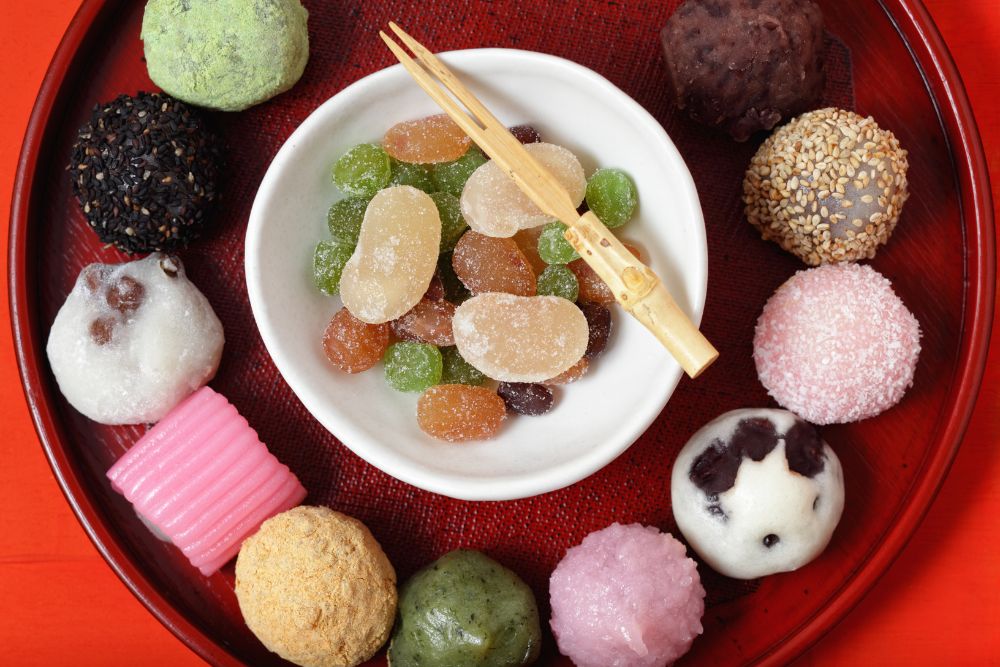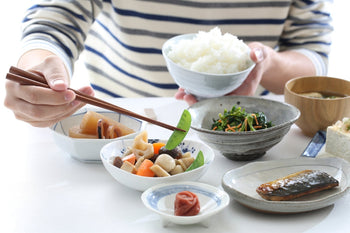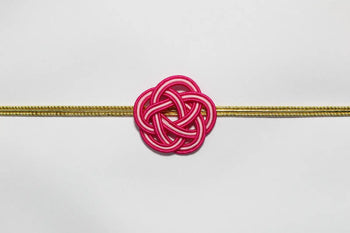

Hey there, curious foodies and dessert enthusiasts! Get ready to tantalize your taste buds and satisfy your sweet cravings as we take a dive into the delightful world of Japanese candy & sweets. We all know that Japan is a culinary wonderland, but have you ever explored its sugary side? From ancient confections steeped in tradition to trendy treats that are all the rage, Japanese sweets are a whole experience on their own. In this article, we're going to introduce everything you need to know about Japanese sweets and candies.
Traditional Japanese sweets
Wagashi or traditional Japanese sweets are made with seasonal ingredients. They are often made with rice, sugar, and other natural ingredients. Wagashi have been enjoyed in Japan for centuries, and there are many different types of wagashi, each with its own unique flavor and appearance.
Mochi
Mochi is a chewy rice cake made from pounded glutinous rice. It is one of the oldest Japanese sweets, with a history dating back over 2,000 years. Mochi is often served with sweet fillings, such as red bean paste or ice cream. It is also used in many traditional Japanese desserts, such as sakura mochi and dango.

Dango
Dango are small, round rice dumplings that are often skewered and served with a sweet sauce. There are many different types of dango, but some of the most popular include sakuramochi (mochi filled with sweet bean paste and wrapped in pickled cherry blossom leaves), mitarashi dango (mochi skewered with a sweet soy sauce glaze), and hanami dango (three colored dango that are eaten during the cherry blossom viewing season). Dango are first mentioned in Japanese literature in the Heian period (794-1185). Learn more about dango in our Exploring the World of Dango: From Meaning to Recipe article.

Yokan
Yokan is a jelly-like dessert made from agar-agar, sugar, and red bean paste. It is often served with azuki beans or kinako (roasted soybean flour). Yokan is first mentioned in Japanese literature in the Edo period (1603-1868).

Taiyaki
Taiyaki are fish-shaped waffles that are filled with sweet bean paste. They are often grilled over a griddle and then topped with a sweet sauce or ice cream. Taiyaki became popular in Japan in the early 20th century.

Dorayaki
Dorayaki are two pancakes that are filled with sweet bean paste. They are similar to taiyaki, but they are not shaped like fish. Dorayaki became popular in Japan in the early 20th century, after the publication of the manga series "Doraemon".

Manju
Manju are steamed buns that are filled with sweet bean paste. They are often made with white or red bean paste, but they can also be filled with other ingredients, such as custard or chocolate. Manju are first mentioned in Japanese literature in the Edo period.

Sakuramochi
Sakuramochi are a type of wagashi that are made with mochi filled with sweet bean paste and wrapped in pickled cherry blossom leaves. They are a popular sweet during the springtime, when cherry blossoms are in bloom. Sakuramochi have been enjoyed in Japan for centuries, and are often eaten during the Hinamatsuri (Girls' Day) festival.

Ningyo-yaki
Ningyo-yaki are small, molded cakes that are often shaped like animals or people. They are made with a batter of flour, sugar, and water, and are often filled with sweet bean paste. Ningyo-yaki became popular in Japan in the early 20th century.
Yatsuhashi
This is a type of wagashi which has two variations: Yatsuhashi and Nama-Yatsuhashi (meaning “raw” Yatsuhashi).
Yatsuhashi is made by drying and baking a dough made from rice flour, such as Joshinko or Shiratamako.
Nama-Yatsuhashi is made with a similar dough but is wrapped around sweet red bean paste, primarily smooth bean paste (koshi-an), and is characterized by its soft and chewy texture. Various flavors like cinnamon, matcha, and chocolate are often added to Nama-Yatsuhashi.

Popular Modern Japanese sweets
With its rich history and diverse culture, Japan has a wide variety of desserts to offer, not only traditional wagashi, but also modern sweets. These are some of popular modern sweets in Japan.
Kasutera / Castella
Castella is a sponge cake that was introduced to Japan from Portugal in the 16th century. It is made with eggs, sugar, flour, and milk, and is often flavored with honey or vanilla. Castella became popular in Japan during the Edo period (1603-1868).

Baumkuchen
Baumkuchen is a German-inspired cake that is made with eggs, sugar, flour, and butter. It is baked in a spiral shape and has a crispy outer layer and a soft, fluffy interior. Honmei-baumkuchen is often served with whipped cream and fruit.

Purin
Purin is a custard pudding that is made with eggs, milk, and sugar. It is often served with azuki bean jam or chocolate sauce. Purin was introduced to Japan in the late Edo period (mid-1800s), and the name 'purin' became established because 'pudding' sounded like 'purin' in Japanese.

Popular Japanese candy
Japanese candy is known for its unique flavors and textures. Here are some of the most popular Japanese candies:
Konpeito
These small, sugar-coated candies are a traditional Japanese treat. They come in a variety of colors and flavors.

Ramune
This fizzy candy is flavored with a variety of fruits, such as lemon, pineapple, and grape. It comes in a distinctive bottle shaped like a Japanese soda can.

Umeboshi candy
Umeboshi candy is often called Karikari-ume in Japanese. These candies are made with pickled plums and have a sour, salty flavor. They are a popular snack food in Japan and are said to be good for digestion.

Japanese Sweets Box
A Japanese sweets box is a great way to try a variety of Japanese sweets. These boxes often contain a variety of popular sweets and candies. They can be a fun and delicious gift for friends and family. Take a look at JapanBite sweets box collection here.

Japanese Sweets Making Kit
What is Japanese sweets making kit
A Japanese sweets making kit is a boxed set of ingredients and instructions that allows you to make your own Japanese candy at home. The kits typically contain pre-measured powders, syrups, and other ingredients that you mix together according to the instructions. Some kits also include molds or other tools to help you shape the candy.
Japanese sweets making kits are a popular activity for kids and adults alike. They are a fun and educational way to learn about Japanese culture and cuisine. The kits are also relatively inexpensive, making them a great option for a rainy day activity or party favor.
Types of Japanese sweets making kit
There are many different types of Japanese sweets making kits available, so you can find one that appeals to your interests. Some popular kits such as Kracie Popin Cookin, Neruneru nerune Apollo, Meiji Tsukurou Kinoko no Yama (Making Kinoko no Yama) Candemina.
When choosing a Japanese sweets making kit, it is important to consider the age of the person who will be using it. Some kits are designed for younger children, while others are more challenging and suitable for older children and adults.
Once you have chosen a Japanese sweets making kit, follow the instructions carefully. Most kits are very easy to use, but it is important to read the instructions carefully to avoid making any mistakes. Have fun and enjoy your delicious homemade Japanese candy!



